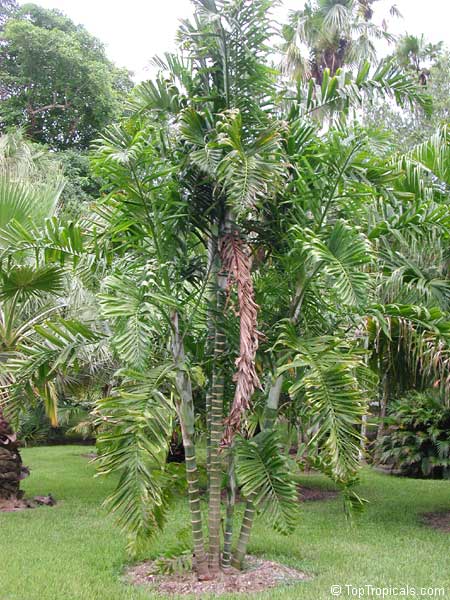Dypsis lanceolata (Dypsis)
Top Tropicals Plant Encyclopedia
Botanical name: Dypsis lanceolata
Common name: Dypsis
Family: Arecaceae / Palmae
Origin: Comoro Islands, Madagascar in mid-altitude rain forest






Native to the Comoro Islands and Madagascar, Dypsis lanceolata (Dypsis) is a small tree that grows to between 10-20 ft tall. It is most often grown in USDA Zone 9-11, where it will be able to thrive in full sun or semi-shade with some regular water. The foliage of the Dypsis is its main attraction, with stiff palm- or palm-like leaves that will give the garden an exotic feel.
Growing the Dypsis is quite straightforward, given a good location and soil. They do best in well-drained soil and will tolerate a wide range of temperatures. They will thrive in full sun or semi-shade, although they may need more water in shadier areas. In cold regions, the Dypsis should be planted in a large container which can be brought under cover when needed. They should still be allowed to get some sun, though, to ensure optimal growth.
The Dypsis is a drought-tolerant plant although regular watering is recommended. During the summer months, the Dypsis should be watered once a week to keep it growing well. During the winter months, the amount of water should be reduced to every two to four weeks. To encourage lush foliage, fertilize the Dypsis every month with a slow-release fertilizer or every other month with a liquid fertilizer.
The Dypsis is relatively easy to take care of, despite its tropical origins. With the right location and care, the Dypsis will give any garden an exotic and tropical feel. Growing the Dypsis in a cool climate requires some extra care and attention, but it is well worth the effort.
